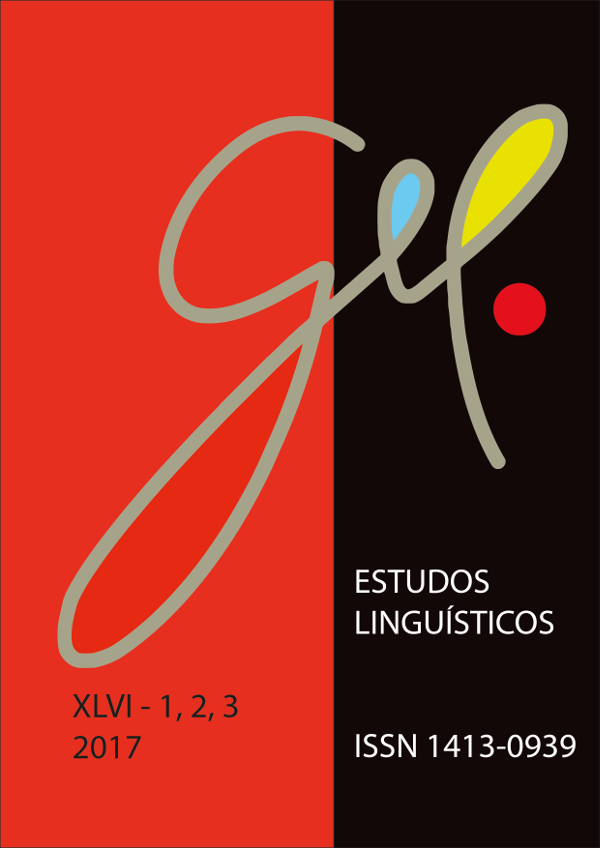Registration of nasal coda in the first year of elementary school
DOI:
https://doi.org/10.21165/el.v46i2.1751Keywords:
nasal coda, syllable, spelling, Portuguesanguage, elementary schoolAbstract
In this study, we had identified typical differences concerning the number of occurrences of non-registry of nasality and of unconventional nasality written registries of Portuguese language, which were performed by students of first year of Elementary School in a private school. In a brief way, we had identified the tendency of the subjects in not writing the syllables CV conventionally (“AVK” for “avenca”) in their first production and then, in started registering the syllable CV (“BEGALA” for “bengala”), still in the first half of the school year. In the second half, we identified a tendency of not registering the syllables CV and of unconventional registries of nasal coda (“CEN” for “quem”), which blend with the conventional registry of this coda (“VENTO”). At the end of the first school year, all the eight subjects analyzed stayed between writing and not writing the nasal coda, thus highlighting the acquisition of the complex syllable with coda, although not still mastering the spelling convention registration.Downloads
References
BISOL, L. A nasalidade, um velho tema. DELTA, São Paulo, v. 14, n. especial, p. 24-46, 1998.
______. A sílaba e seus constituintes. In: NEVES, M. H. M. Gramática do Português Falado. v. 7. Campinas: Editora da UNICAMP, 1999. p. 701-742.
______. Estudo sobre a nasalidade. In: ABAURRE, M. B. M.; RODRIGUES, A. C. S. (Org.). Gramática do Português Falado. v. 8. Campinas: Editora da UNICAMP, 2002. p. 501-535.
BORDUQUI, C. L. B. As vogais pretônicas no noroeste paulista: estudo da vogal /e/ nas sílabas VC em início de palavra. In: 58º Seminário do GEL, 2010, São Carlos. 58º Seminário do Gel, 2010.
CAGLIARI, L. C. Um pouco da história da nasalidade: da ortografia para a fonética e fonologia. In: X Congresso da AIL: Lusofonia tempo de reciprocidades, 2008. Resumos. Funchal: Funchal 500 Anos, E. E. M., v. 1, p. 1-16, 2008.
______. Elementos de fonética do Português Brasileiro. São Paulo: Paulistana, 2009.
CAMARA JR, J. M. Problemas de lingüística descritiva. 3. ed. Petrópolis: Vozes, 1970.
CORRÊA, M. L. G. Letramento e heterogeneidade da escrita no ensino de português. In: SIGNORINI, I. (Org.). Investigando a relação oral/escrito e as teorias do letramento. Campinas: Mercado de Letras, 2001. p. 135-166.
______. O modo heterogêneo de constituição da escrita. São Paulo: Martins Fontes, 2004.
MIRANDA, A. R. M. A grafia de estruturas silábicas complexas na escrita de crianças. In: PINHO, S. Z. (Org.). Formação de Educadores: o papel do educador e sua formação. v. 1. São Paulo: Editora da UNESP, 2009. p. 409-426.
SELKIRK, E. O. The Syllable. In: HULS, V. der; SMITH, N. (Ed.). The Structure of Phonological Representations (Part II). Dordrecht: Foris Publication, 1982.
WETZELS, W. L. Contrastive and allophonic properties of Brazilian Portuguese vowels. In: KIBBEE, D.; WANNER, D. (Ed.). New Analyses in Romance Linguistics. Amsterdam: J. Benjamins, 1988.



